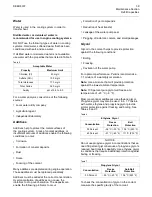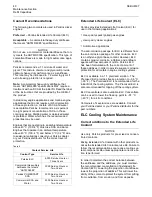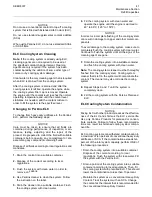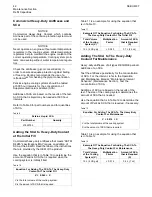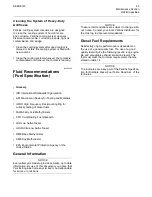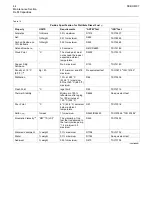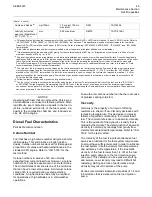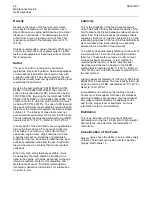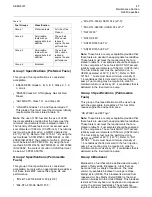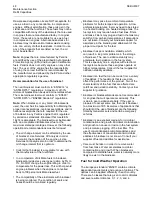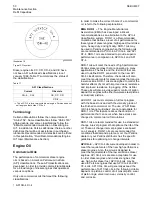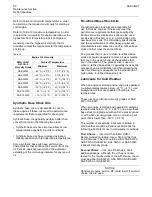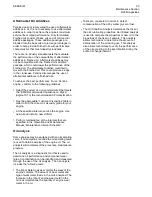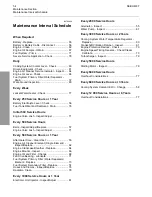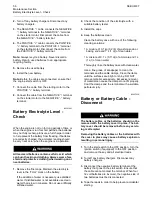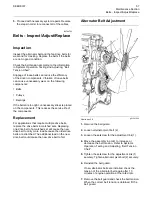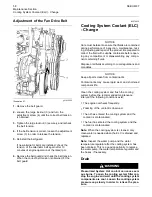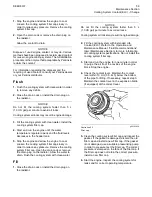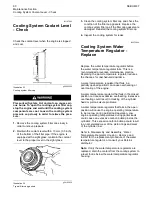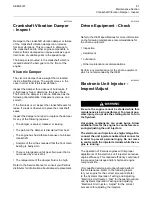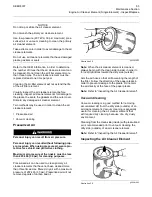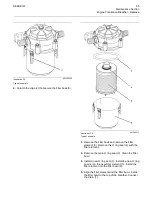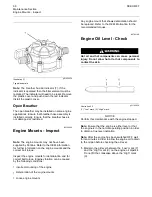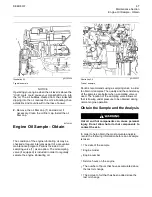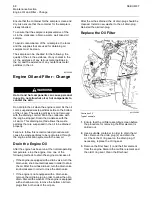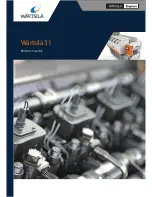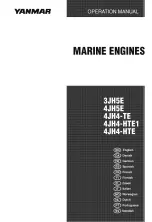
SEBU8337
53
Maintenance Section
Re
fi
ll Capacities
Aftermarket Oil Additives
Perkins does not recommend the use of aftermarket
additives in oil. It is not necessary to use aftermarket
additives in order to achieve the engine’s maximum
service life or rated performance. Fully formulated,
fi
nished oils consist of base oils and of commercial
additive packages. These additive packages are
blended into the base oils at precise percentages in
order to help provide
fi
nished oils with performance
characteristics that meet industry standards.
There are no industry standard tests that evaluate
the performance or the compatibility of aftermarket
additives in
fi
nished oil. Aftermarket additives may
not be compatible with the
fi
nished oil’s additive
package, which could lower the performance of the
fi
nished oil. The aftermarket additive could fail to
mix with the
fi
nished oil. This could produce sludge
in the crankcase. Perkins discourages the use of
aftermarket additives in
fi
nished oils.
To achieve the best performance from a Perkins
engine, conform to the following guidelines:
•
Select the correct oil, or a commercial oil that meets
the “EMA Recommended Guideline on Diesel
Engine Oil” or the recommended API classi
fi
cation.
•
See the appropriate “Lubricant Viscosities” table in
order to
fi
nd the correct oil viscosity grade for your
engine.
•
At the speci
fi
ed interval, service the engine. Use
new oil and install a new oil
fi
lter.
•
Perform maintenance at the intervals that are
speci
fi
ed in the Operation and Maintenance
Manual, “Maintenance Interval Schedule”.
Oil analysis
Some engines may be equipped with an oil sampling
valve. If oil analysis is required the oil sampling valve
is used to obtain samples of the engine oil. The oil
analysis will complement the preventive maintenance
program.
The oil analysis is a diagnostic tool that is used to
determine oil performance and component wear
rates. Contamination can be identi
fi
ed and measured
through the use of the oil analysis. The oil analysis
includes the following tests:
•
The Wear Rate Analysis monitors the wear of the
engine’s metals. The amount of wear metal and
type of wear metal that is in the oil is analyzed. The
increase in the rate of engine wear metal in the
oil is as important as the quantity of engine wear
metal in the oil.
•
Tests are conducted in order to detect
contamination of the oil by water, glycol or fuel.
•
The Oil Condition Analysis determines the loss of
the oil’s lubricating properties. An infrared analysis
is used to compare the properties of new oil to the
properties of the used oil sample. This analysis
allows technicians to determine the amount of
deterioration of the oil during use. This analysis
also allows technicians to verify the performance
of the oil according to the speci
fi
cation during the
entire oil change interval.

